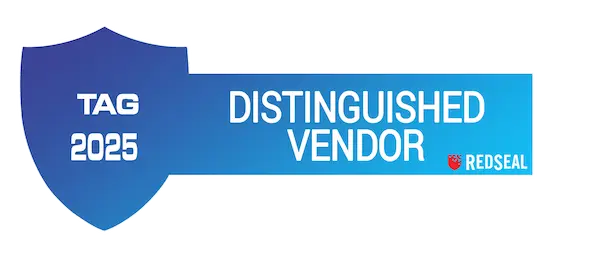Validating Threat Exposures: Strengthening Your CTEM Strategy
In our blog, Prioritize to Protect: RedSeal’s Methodology for Effective Threat Exposure Management, we discussed how organizations can prioritize their vulnerabilities to reduce risk. The next critical step in the CTEM process is validation. Once vulnerabilities are scoped, discovered, and prioritized, it is essential to validate them and assess the potential impact on the organization. This ensures that resources are focused on threats that are actually exploitable and that remediation efforts are both effective and feasible.
The importance of validation in CTEM
At the core of CTEM validation is thinking like an attacker. Rather than focusing solely on detection, shift your perspective to understanding exploitation and impact. This approach allows you to refine prioritization by asking critical questions:
- How likely is it that an adversary would exploit a given exposure?
- Is it technically possible to exploit the exposure?
- What is the potential blast radius and extent of lateral movement once an attacker gains access?
- How do those downstream exposures change our risk level and response tactics?
- Are we concentrating resources where they matter most?
However, validation isn’t just about simulated attacks. It’s also about ensuring that remediation measures are both technically and operationally feasible. Verifying that suggested fixes won’t conflict with existing policies, infrastructure, or workflows is essential for building a solid business case for remediation and fostering collaboration across teams.
How RedSeal drives CTEM validation
RedSeal strengthens CTEM by offering tools for thorough validation at every stage. In our previous blog on prioritization, we wrote about how RedSeal takes exploitability and impact into account when prioritizing exposures—essentially combining the prioritization and validation steps of the CTEM process. However, RedSeal offers more to support the validation step specifically.
Through virtual, passive red teaming tests, RedSeal confirms the exploitability of exposures and provides in-depth analysis of lateral movement (evaluating the blast radius and all possible attack paths). This approach not only helps determine how far a threat could spread but also highlights which vulnerabilities could have the most devastating impact.
In addition to validating attack paths, RedSeal validates the scope of vulnerability scans and assesses the effectiveness of security controls, such as network segmentation and device configurations. The platform simulates “what-if” scenarios to predict how proposed changes might affect the environment and whether new risks could be introduced.
With RedSeal’s support, organizations gain clarity around the true risks of their attack surface, empowering them to make informed decisions about where to allocate resources and how to manage their security posture more effectively.
By validating exposures through both technical assessments and feasibility checks, RedSeal helps ensure that organizations are addressing the right threats, taking appropriate steps to minimize risk, and improving their overall cybersecurity resilience.
Reach out to RedSeal or schedule a demo today to learn how to bolster your cybersecurity efforts and make the strategic move that promises long-term benefits and peace of mind.



